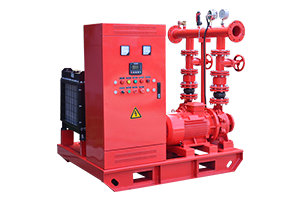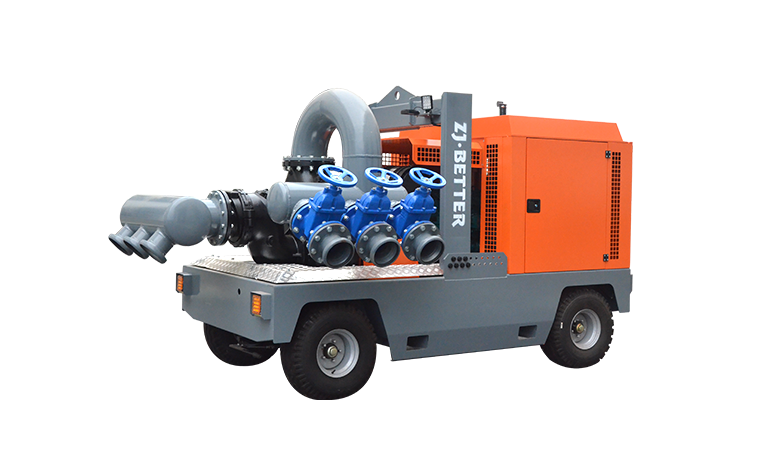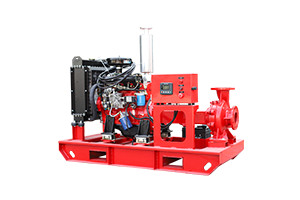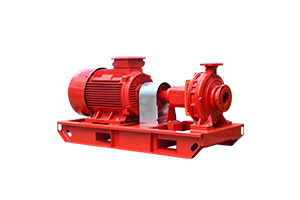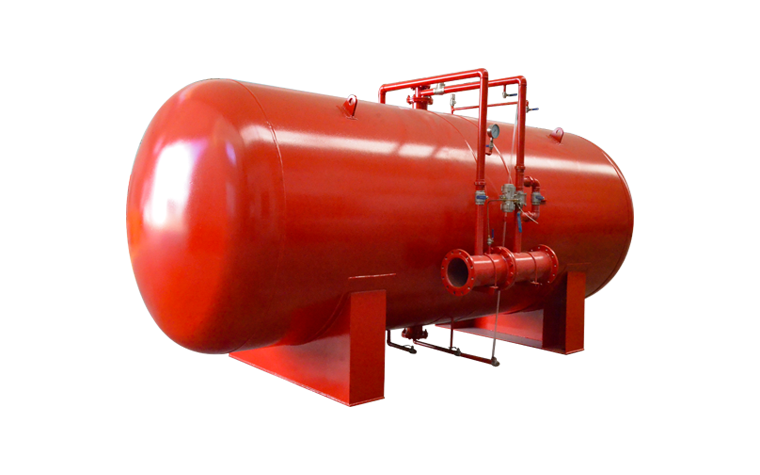-
 Mar 30, 2023How to choose a fire pump?When it comes to protecting your home or business from fire, having the right fire pump is essential. A fire pump is a self-contained device that pumps water from a water source to the fire sprinkler system, helping to extinguish a fire. Choosing the right fire pump is important, as the incorrect pump can cause serious damage. Here are a few tips to help you choose the right fire pump for your needs.
Mar 30, 2023How to choose a fire pump?When it comes to protecting your home or business from fire, having the right fire pump is essential. A fire pump is a self-contained device that pumps water from a water source to the fire sprinkler system, helping to extinguish a fire. Choosing the right fire pump is important, as the incorrect pump can cause serious damage. Here are a few tips to help you choose the right fire pump for your needs.
1. Determine Your Water Source: The first step in choosing a fire pump is to determine your water source. You will need to consider the size of your water source, as well as its pressure and flow rate. This will determine the type of fire pump you need to purchase.
2. Consider Your Fire Sprinkler System: Once you have determined your water source, you will need to consider the type of fire sprinkler system you have in place. Your fire pump should be designed to meet the requirements of your system.
3. Consider Your Requirements: You will also need to consider your specific requirements. This includes the size of the pump, the type of fuel source you will use, and any other special needs your pump must meet.
4. Research the Different Types of Fire Pumps: There are a variety of fire pumps available on the market today, such as electric pumps, diesel pumps, and gas pumps. Research the different types of pumps to determine which one is best suited for your needs.
5. Consider Your Budget: Finally, it is important to consider your budget when choosing a fire pump. Fire pumps can range in price, so make sure to compare different models and prices before you make your purchase.
By following these tips, you can choose the right fire pump for your needs. Be sure to do your research and consider your budget before making your purchase. With the right fire pump, you can rest assured that your home or business will be protected from fire.View details -
 Mar 30, 2023The vertical turbine pump has a variety of usesThe vertical turbine pump is an important part of any liquid handling system. It is a pump that is used to move fluids from one location to another, typically from a lower elevation to a higher elevation. The vertical turbine pump is an efficient and reliable way to move liquids from one point to another.
Mar 30, 2023The vertical turbine pump has a variety of usesThe vertical turbine pump is an important part of any liquid handling system. It is a pump that is used to move fluids from one location to another, typically from a lower elevation to a higher elevation. The vertical turbine pump is an efficient and reliable way to move liquids from one point to another.
The vertical turbine pump consists of a casing, impeller, and drive shaft. The impeller is located at the bottom of the casing and is connected to the drive shaft. The impeller is designed to spin in a circular motion, creating suction that draws liquid up into the casing. The casing is designed to be able to withstand the pressures created by the suction and the liquid being drawn into the casing. The drive shaft is connected to a motor, which powers the impeller.
The vertical turbine pump is an efficient way to move liquid from one point to another. It is able to move large volumes of liquid in a small amount of time. This makes it an ideal pump for many applications. It is also reliable, as it is designed to withstand the pressures it is subjected to.
The vertical turbine pump has a variety of uses. It can be used for irrigation, industrial applications, water treatment, and many other applications. It is important to choose the right pump for the application, as different pumps are designed to handle different types of liquids.
The vertical turbine pump is an important part of many liquid handling systems. It is an efficient and reliable way to move large volumes of liquid from one point to another. It is important to choose the right pump for the application, as different pumps are designed to handle different types of liquids. With proper maintenance, the vertical turbine pump can provide reliable service for many years.View details -
 Mar 29, 2023Write a promotional article about Precautions for the use of diesel engine fire pumpsDiesel engine fire pumps are an invaluable tool in fighting fires, but they come with their own set of safety precautions. It is essential that operators understand these precautions and take them seriously.
Mar 29, 2023Write a promotional article about Precautions for the use of diesel engine fire pumpsDiesel engine fire pumps are an invaluable tool in fighting fires, but they come with their own set of safety precautions. It is essential that operators understand these precautions and take them seriously.
First and foremost, only trained personnel should be allowed to operate diesel engine fire pumps. These pumps require a high level of skill and knowledge of the system, and untrained operators can create hazardous situations. It is important to ensure that operators understand the proper operation and maintenance of the pump, as well as any safety features that may be built into the system.
Another important precaution is to inspect the system regularly. This includes inspecting the fuel system, the engine, and the pump for any signs of wear or damage. Any defects should be addressed immediately to prevent a potential fire hazard. Additionally, operators should be aware of the pump's temperature limits and watch for any signs of overheating.
Additionally, operators should always wear the proper safety equipment when operating a diesel engine fire pump. This includes safety goggles, gloves, and protective clothing. These precautions help protect the operator from potential harm, as well as help prevent any accidental spills or fires.
Finally, operators should always adhere to the manufacturer's instructions. This includes following the recommended operating and maintenance procedures, as well as any other safety instructions. It is important to read and understand the manual before operating the pump, and to follow the instructions closely.
By taking the proper precautions and following the manufacturer's instructions, operators can ensure that their diesel engine fire pumps are operating safely and effectively.View details -
 Mar 29, 2023Fire Australia 2023 Conference & TradeshowAre you ready to join the most exciting event of 2023? Fire Australia 2023 Conference & Tradeshow is the place to be! Taking place from Wednesday 3 to Friday 5 May 2023, at the International Convention Centre in Sydney, this event is the perfect opportunity for fire professionals from all around the world to come together to share their knowledge and explore the latest products and services in the industry.
Mar 29, 2023Fire Australia 2023 Conference & TradeshowAre you ready to join the most exciting event of 2023? Fire Australia 2023 Conference & Tradeshow is the place to be! Taking place from Wednesday 3 to Friday 5 May 2023, at the International Convention Centre in Sydney, this event is the perfect opportunity for fire professionals from all around the world to come together to share their knowledge and explore the latest products and services in the industry.
This conference and tradeshow will feature a range of keynote speakers and panel discussions on the latest topics, trends and developments in the fire industry. You’ll hear from industry experts and have the chance to network and collaborate with other fire professionals. There’s also a dedicated exhibition space where you can explore the latest products and services, as well as speak directly with suppliers and manufacturers.
The Fire Australia 2023 Conference & Tradeshow is the perfect event for anyone wanting to stay ahead of the curve in the fire industry. Attendees will gain valuable insights into the latest trends, technologies, and products. Plus, there’s plenty of opportunities to make new connections, form partnerships, and find the perfect solutions for your business.
Be sure to visit us at Booth No. 116, where we’ll be showcasing the latest products and services. We look forward to seeing you there!View details -
 Mar 28, 2023Fire pump electric valve positioning and structural characteristics and principles of common pumpsFire pump electric valve positioning and structural characteristics:
Mar 28, 2023Fire pump electric valve positioning and structural characteristics and principles of common pumpsFire pump electric valve positioning and structural characteristics:
1. The fire pump electric valve positioning is mainly used to control the start and stop of the pump, the opening and closing of the valve, and the adjustment of the flow rate.
2. The fire pump electric valve positioning consists of a motor, a valve body, a valve core, a valve disc, a valve seat and other components.
3. The motor drives the valve core to rotate, so that the valve disc and the valve seat are opened or closed, and the flow rate can be adjusted by changing the distance between the valve disc and the valve seat.
4. The fire pump electric valve positioning has the advantages of simple structure, reliable performance, easy operation and maintenance, etc.
The principle of common pumps:
1. Centrifugal Pump: The centrifugal pump uses the centrifugal force generated by the rotation of the impeller to increase the water pressure and discharge the water.
2. Gear Pump: The gear pump uses two intermeshing helical gears to form a sealed chamber and move the liquid in the sealed chamber to achieve the purpose of increasing pressure and discharging water.
3. Rotary Vane Pump: The rotary vane pump uses a rotor with vanes to form a sealed chamber, and the liquid in the sealed chamber is moved to achieve the purpose of increasing the pressure and discharging the water.
4. Diaphragm Pump: The diaphragm pump uses a diaphragm to form a sealed chamber, and the liquid in the sealed chamber is moved to achieve the purpose of increasing the pressure and discharging the water.View details -
 Mar 28, 2023Overview of fire pump valves and valve classificationFire pump valves are used to control the flow of water in a fire protection system. They are typically installed in a fire pump system to ensure that water is delivered to the fire sprinkler system at the correct pressure and flow rate. Fire pump valves are available in several different types, including gate, globe, butterfly, check, and ball valves. Each type of valve has its own advantages and disadvantages, and the type chosen should be based on the specific requirements of the application. All fire pump valves must be tested and approved by a recognized testing agency to ensure compliance with fire protection standards.
Mar 28, 2023Overview of fire pump valves and valve classificationFire pump valves are used to control the flow of water in a fire protection system. They are typically installed in a fire pump system to ensure that water is delivered to the fire sprinkler system at the correct pressure and flow rate. Fire pump valves are available in several different types, including gate, globe, butterfly, check, and ball valves. Each type of valve has its own advantages and disadvantages, and the type chosen should be based on the specific requirements of the application. All fire pump valves must be tested and approved by a recognized testing agency to ensure compliance with fire protection standards.
Fire pump valves are used in fire protection systems to control the flow of water from the fire pump to the sprinkler system. They are designed to open or close quickly in response to a fire alarm and allow water to be quickly directed to the fire area. Fire pump valves are classified according to their function and operation. These include check valves, butterfly valves, gate valves, and ball valves.
Check valves are used to prevent backflow in the fire suppression system. They are designed to open when the pressure reaches a certain level and close when the pressure drops. They are usually used in combination with other valves to control the flow of water.
Butterfly valves are used to regulate the flow of water in the fire suppression system. They are designed to open quickly when the pressure reaches a certain level and close when the pressure drops. They are often used in combination with other valves to control the flow of water.
Gate valves are used to open or close the flow of water in the fire suppression system. They are designed to open and close quickly and can be used in combination with other valves to control the flow of water.
Ball valves are used to control the flow of water in the fire suppression system. They are designed to open and close quickly in the event of a fire to prevent water from flowing to the affected area. They are also used to isolate sections of a system for maintenance and repair.View details

